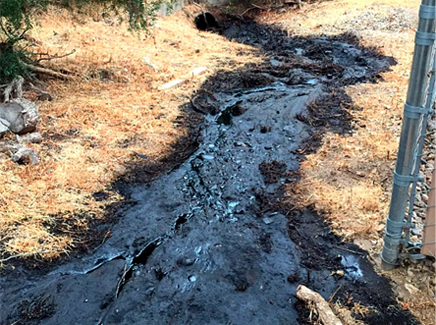Leak detection

Pipeline networks are the most economic and safest transport systems for mineral oil, gases and other fluid products. As a means of long-distance transport, pipelines have to fulfill high demands of safety, reliability and efficiency.
Most pipelines, regardless of what they transport, are designed with a typical life span of 25 years. When they do begin to fail, they do so slowly beginning with leaks at poor construction joints, corrosion points and small structural material cracks, and gradually progress to a catastrophic ending. In addition, there are also other reasons for leak disasters such as technological accidents, terrorist activities, sabotage, or theft.

In general leaks that occur in pipelines have the potential to cause the following problems and damages:
- Loss of human lives.
- Environmental damage.
- Fines and financial liabilities.
- Lost revenues due to spilled product.
- Interruptions in the operations and reduced throughput.
- Higher operational costs.
- Damage to the corporate reputation.
The primary purpose of a leak detection system (LDS) is to assist pipeline operators in detecting and localizing leaks. LDS provides an alarm and displays other related data to the pipeline controllers in order to aid in decision-making processes. Pipeline LDS can also enhance productivity and system reliability thanks to reduced downtime and inspection time. Therefore, LDS is an important aspect of pipeline technology and daily operations.
Our company offers LDS that cover all relevant methods described by the American Petroleum Institute document “RP 1130” and the guidelines published by Pipeline Research Council International:
-
Internal methods:
-
Monitoring of operational data:
- Pressure wave (rarefaction wave) analysis – this method is based on the principle of detection and analysis of pressure waves (rarefaction waves) that occur in the pipelines during leaks.
- Mass balance analysis – in this method the flow meters are used to measure the product’s flow and mass entering and exiting the pipeline. Deviations in these measurements are then used to determine the presence of a leak.
-
Computational pipeline monitoring:
- Real-time transient modeling – this method uses mathematical models of the flow within a pipeline using basic physical laws such as conservation of mass, conservation of momentum, and conservation of energy.
-
Monitoring of operational data:
-
External methods:
- Fiber optic cable – this method uses spectral analysis of fiber optic cable (placed along the length of the pipeline) in order to detect temperature changes and vibrations in the ground surrounding the fiber optic cable.
- Environmentally safe operations.
- Reduction of financial liabilities that might result from spills.
- Saving money by preventing large scale incidents.
- Maintenance of good reputation.
- Compliance with governmental and commercial regulations.
- Efficient and stable enterprise operations and reliable throughput.
- Reduction in the frequency of repairs.
- Minimization of human error.
- Prevention of possible future problems and incidents.
- Design of the right system that fits the needs of the customer.
- Determination of optimum operation parameters.
- Significantly lower operational costs.
In order to better understand our different leak detection solutions we had created the following comparison:
- Setup – average
- Running – low
- Maintenance – low
- Setup – high
- Running – low
- Maintenance – low
- Setup – average
- Running – average
- Maintenance – average
- Setup – high
- Running – average
- Maintenance – average
- Can be used for a wide range of pipelines (short and long, liquid and gas).
- Can be installed on new and existing pipelines.
- Very well suited for pipelines that have limited communication capabilities at the intermediary technical sites.
- One of the best options for protection of pipeline’s water crossings (rivers, lakes, etc.).
- Short pipelines (especially those located inside refineries, chemical plants and other industrial facilities).
- Well suited for pipelines that already have installed flow meters.
- Better suited for pipelines transporting liquid products.
- Can be used for a wide range of pipelines (short and long, liquid and gas).
- Very good match for pipelines that transport products in batches.
- Well suited for pipelines that already have installed flow meters, pressure transducers and temperature sensors.
- Can be used for a wide range of pipelines (short and long, liquid and gas).
- Applicable for new pipelines or pipelines that have existing fiber optics cable(s) already installed.
- Very well suited for long pipelines that have extended sections without intermediary technical sites.
- Environmental protection – good
- Industrial safety – average
- Theft protection – well suited
- Environmental protection – average
- Industrial safety – average
- Theft protection – low
- Environmental protection – average
- Industrial safety – average
- Theft protection – average
- Environmental protection – above average
- Industrial safety – well suited
- Theft protection – average
Check our criteria and requirements for leak detection systems and methods to learn more about this comparison.


